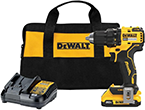Knowing the different types of wood joints can be an exceptionally helpful bit of knowledge to have, particularly as you begin planning out your next woodworking project. It can be a little difficult to keep all the different names straight, particularly for beginning woodworkers or do it yourselfers, so take advantage of this helpful little list. Below you will find most of the common types of wood joints, as well as a brief description of what each one is.
- Basic butt. Perhaps the single most basic, and easiest of all the joints, is the basic butt joint. This type of joint is what you get when you have one piece of wood "butt" up against another, usually at a square angle. One of the most common places that you can see this type of joint is in the framing of walls.
- Mitered butt. This type of joint is extremely similar to the basic butt, except with a small twist. Instead of having the two boards meet at a square angle, the end of each board is cut at reciprocating angles to create a 90 degree angle. For example, the most common type of mitered butt joint cut is where each board end is cut at a 45 degree angle, and then joined together.
- Half-lap. In the half-lap joint, you will be removing part of both boards where they will be joined together. Typically, you will be removing a small notch on each board that goes no more than halfway through it. When the pieces of wood are joined, you will have an exceptionally strong joint, but some wood that is now a bit more delicate.
- Tongue and groove. The tongue and groove joint is typically used when you are looking to join to square boards along a single long edge. What you do with this type of joint is create a small lip or tongue along the edge of one of the boards, and a correspondingly deep groove along the middle of the other board.
- Mortise and tenon. A mortise and tennon style of joint is one that is commonly seen when making furniture. One way that you could use to describe this type of joint is the peg and hole method. Basically you are creating a peg out of one piece of wood, and a corresponding hole in the other piece of wood. The peg is called the tenon, and the hole is called the mortise.
- Biscuit. One joining method that is similar to the tongue and groove method is called biscuit joints. What you do is cut slots in both pieces of wood that you want to join, and then use a wafer of a different type of wood (often beechwood) called a biscuit to join them together. This type of joint is commonly used when making table and desk tops.
Now that you know what some of the different types of wood joints, you can begin experimenting. After all, experimenting and trying out new things can be one of the most enjoyable parts of working with wood. While some types of joints won't work as well for some projects, you may be surprised at the results when you try a few things out.
Author Bio
Lee Wyatt
Contributor of numerous Tips.Net articles, Lee Wyatt is quickly becoming a regular "Jack of all trades." He is currently an independent contractor specializing in writing and editing. Contact him today for all of your writing and editing needs! Click here to contact. Learn more about Lee...
Conserving Water in the Home
Have you ever noticed how the water bill seems to be getting more and more expensive as time goes by? Well instead of ...
Discover More
What is Early Retirement?
What is early retirement? While most people think that they know what this is, not very many people know how they can get ...
Discover More
Devilish Baked Chicken
Chicken is always a great crowd pleaser, but over time the same old recipes can be a little boring. If you are looking ...
Discover More
More Home Improvement Tips
Understanding Lumber Sizes
If you are thinking of doing any type of building or remodeling around your home, then understanding lumber sizes is a ...
Discover More
Working with Pressure Treated Lumber
Pressure treated lumber is a material that is exceedingly popular among those in the construction and do-it-yourself ...
Discover More
Choosing the Right Wood for Molding
Whether you are looking at adding some molding to a specific room, or want it throughout your home you need to do some ...
Discover More

Comments